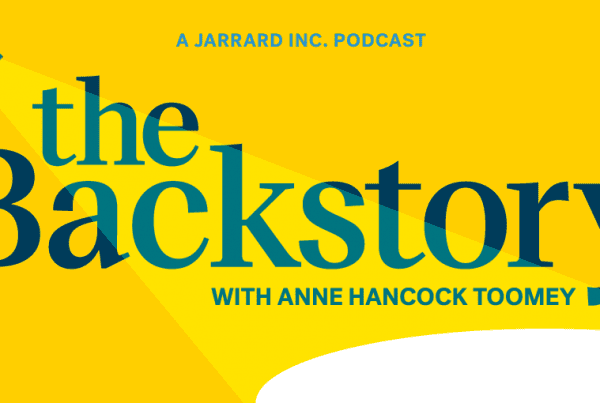The Big Story: Why digital health companies are optimistic
“While direct-to-consumer telehealth companies grapple with some higher advertising costs, companies that sell enterprise solutions to health systems are feeling more bullish.”
Great products demand a great story: Lessons from Coca-Cola and Gemini AI
By Alex Hunter
3-minute read
A health tech CEO recently lamented, “I have a better product, but my competitor is telling a better story. They’re winning.”
Well, yes. That’s what good stories do.
Christina Farr, former health tech journalist and venture capital exec Tweeted last week about a CEO saying he “only does operations” with a meme: “Good luck with that.”
CEOs: "I'm not a storyteller; I'm more of a heads down operator."
— Christina Farr (@chrissyfarr) August 5, 2024
Me: pic.twitter.com/BZjqYJGtoJ
The field of healthcare technology is awash with products and services that claim to outperform their competitors with new bells, whistles and more. Being unique is commonplace.
A great new product or service? Check. Without a solid deliverable, little else matters. But assuming that (and that’s not a small assumption), the work has just begun. Build it and they may not come, after all. A good story well told is required, lest the great product die in the dark. Just because a potential customer has the resources to buy doesn’t mean they will.
How powerful are stories?
You know the cautionary tale of Theranos. As the WSJ reminded readers this week, the service was a high – or maybe low – water mark for style over substance. Its story exerted a gravitational pull on the biotech, health tech and investment industries for years. Until, of course, it didn’t.
On the other hand, last week we saw Google’s Gemini AI – an apparently excellent service – trip over itself by telling a story viscerally rejected by its audience.
And who can forget the Pepsi challenge from way back? Despite the clear public preference for Pepsi in blind taste tests, Coke did and does (and will continue to) dominate the cola marketplace.
Traditional healthcare providers have a range of high-quality offerings and activities that meet needs and fulfill their mission but require a strong story well told. It may be marketing a new service line to attract patients and showcase quality care. It may be to counter the narrative that hospitals aren’t doing enough on community benefit. It means little if the good work is real and the results are clear but there isn’t that powerful story.
The good health tech story
Looking within the constellation of the healthcare industry, health tech companies particularly need good stories, especially considering the opportunity alluded to in the Modern Healthcare article.
As a category, health tech is decades old and a well-established resident in our industry’s ecosystem. Still, it remains the feisty youngest sibling, always causing a commotion in the family.
In the complex, slow-moving and highly regulated world of healthcare delivery, health tech remains more of an outside force than an integrated component. Health tech moves quickly, too, and, if not managed well, can spark confusion and mistrust instead of adoption. It can be easily misunderstood.
Leading a hospital? You may experience this mismatch first-hand. You’re on the receiving end of what can be tech’s big promises and claims of constructive disruption. You’re hearing the sales pitch that doesn’t take your complex politics into account.
You’re hearing all of the features, but not the right benefits. Whatever the strengths of a tech solution, if the physicians won’t use it, the patients won’t trust it or the payers won’t cover it, it’s less a blessing than a curse.
In healthcare’s low risk, high stakes world, the better – and natural – response is often: “Sounds good, but no thanks.”
For health tech leaders? A better story is prescribed.
Whether it’s a hospital executive showcasing community benefit efforts to the media and lawmakers, or a health tech exec selling to that same hospital leadership team, here are a few things to keep in mind.
- Know your audience. What pain points are they actually facing, what questions do they have? What is best for them?
- Recognize the barriers. Regulation, the legislative process, entrenched interests, payment models. A product or idea means little without a clear idea on how to navigate those challenges.
- Use the right language. Define the terms and tell a story using the language your audience – and buyer – understands and expects to hear.
- Don’t confuse features with benefits. It’s not about what the thing does, it’s about what it does for the user. It’s not the mobile food pantry, it’s giving kids full stomachs to focus at school. It’s not the all-new user interface, it’s allowing physicians to seamlessly do x, y or z that used to take too long.
- Define “best.” Your story can also create the idea of what is best. It could be convenience, cost, price or ease of use. Old tech that’s cheap and accessible may be best because it’s simplest. Meet your audience where they are focus on what’s best for them. Look at the video format war: Betamax provided better quality, VHS could pack more onto one tape at a lower cost. Different bests, and only one came out on top.
- Have the numbers to back it all up. The story has to match reality. But it’s still illustrative. Did your organization claim costs would go down after a merger? Did they? Is the quality of data coming off a wearable what it needs to be for a physician to help a patient track her health? Don’t break trust by having a story that doesn’t match the experience people will have.
You can’t be all things to all people. But you do have to be what your core audience needs in the moment they need it. And that requires having both the solution they’re looking for…and the story to convince them it’s the right one.
Note: For the better part of 20 years, Jarrard has been helping provider organizations tell their stories and engage their audiences. Today, we’re excited to engage with the Health Tech sector and help innovative – disruptive, even? – companies do the same.
For more on the launch of Jarrard’s Health Tech practice, meet Alex Hunter and take a look at our approach.
Contributors: David Shifrin, David Jarrard
Image Credit: Drew Do




